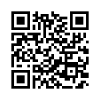REPRESENTASI KESANTUNAN TINDAK TUTUR BERBAHASA INDONESIA DALAM PEMBELAJARAN DI KELAS (KAJIAN ETNOGRAFI KOMUNIKASI)
Abstract
This article is about a research study conducted to describe and clarify
politeness in speech acts using Indonesian in the talk done during a lesson in the
classroom at SMA PMT Hamka, a senior high school in Padang Pariaman,
Sumatra Barat, focusing on representations of (1) the forms of politeness in the
speech acts, (2) the functions of politeness in the speech acts, and (3) the strategies
of using politeness in the speech acts. It was a case study with communication
ethnography and pragmatics as its starting points. The data consisted of two types:
data from utterances and data from field notes. The two types of data, compiled by
means of recordings, observations, and interviews, were analyzed with an
interactive model of analysis.
The research findings are as follows. First, in the context of
representations of the forms of speech-act politeness, it is found that (a) such
representations using Indonesian use the declarative, interrogative, and imperative
modes, (b) the use of the declarative mode represents command, request, advice,
and praise, (c) the use of the interrogative mode represents requesting, asking for
what students have promised, clarifying whether students have understood, and
giving a warning, (d) the use of the imperative mode represents invitation to do
something, request, and command, (e) a softening of the illocution power is found
in utterances using the declarative and interrogative modes so that the utterances
are felt to be polite, (f) utterances using the interrogative mode, however, tends to
have a strengthening effect on the illocution power so that the utterances are felt
less polite. Second, in the context of representations of the functions of speech-act
politeness, it is found that (a) the functions of politeness in directive acts consist of
requesting, permitting, advising, commanding, and forbidding functions and (b)
the functions of politeness in expressive acts consist of praising and thanking
functions. Third, in the context of representations of the strategies of speech-act
politeness, it is found that (a) utterances can be direct, realized in complete
imperative form and imperative form with incomplete phrase and (b) utterances
can be indirect by (1) being with expressions of politeness used in a positive way,
(2) being with expressions of politeness used in a negative way, and (3) being
unclear.
Keywords: politeness, speech act, directive, expressive, classroom instruction
120
politeness in speech acts using Indonesian in the talk done during a lesson in the
classroom at SMA PMT Hamka, a senior high school in Padang Pariaman,
Sumatra Barat, focusing on representations of (1) the forms of politeness in the
speech acts, (2) the functions of politeness in the speech acts, and (3) the strategies
of using politeness in the speech acts. It was a case study with communication
ethnography and pragmatics as its starting points. The data consisted of two types:
data from utterances and data from field notes. The two types of data, compiled by
means of recordings, observations, and interviews, were analyzed with an
interactive model of analysis.
The research findings are as follows. First, in the context of
representations of the forms of speech-act politeness, it is found that (a) such
representations using Indonesian use the declarative, interrogative, and imperative
modes, (b) the use of the declarative mode represents command, request, advice,
and praise, (c) the use of the interrogative mode represents requesting, asking for
what students have promised, clarifying whether students have understood, and
giving a warning, (d) the use of the imperative mode represents invitation to do
something, request, and command, (e) a softening of the illocution power is found
in utterances using the declarative and interrogative modes so that the utterances
are felt to be polite, (f) utterances using the interrogative mode, however, tends to
have a strengthening effect on the illocution power so that the utterances are felt
less polite. Second, in the context of representations of the functions of speech-act
politeness, it is found that (a) the functions of politeness in directive acts consist of
requesting, permitting, advising, commanding, and forbidding functions and (b)
the functions of politeness in expressive acts consist of praising and thanking
functions. Third, in the context of representations of the strategies of speech-act
politeness, it is found that (a) utterances can be direct, realized in complete
imperative form and imperative form with incomplete phrase and (b) utterances
can be indirect by (1) being with expressions of politeness used in a positive way,
(2) being with expressions of politeness used in a negative way, and (3) being
unclear.
Keywords: politeness, speech act, directive, expressive, classroom instruction
120
Full Text:
PDFDOI: https://doi.org/10.21831/diksi.v15i2.6601
Refbacks
- There are currently no refbacks.
Copyright (c) 1970 DIKSI
Jurnal Diksi is published by Faculty of Languages, Arts, and Culture, Universitas Negeri Yogyakarta. It is licensed under a Creative Commons Attribution-ShareAlike 4.0 International License. Based on a work at http://journal.uny.ac.id/index.php/diksi
Our Journal has been Indexed by:
Diksi Journal is published by the Faculty of Languages, Arts, and Culture Universitas Negeri Yogyakarta in collaboration with Himpunan Sarjana Kesusasteraan Indonesia (HISKI)
Supervised by:

2.png)














